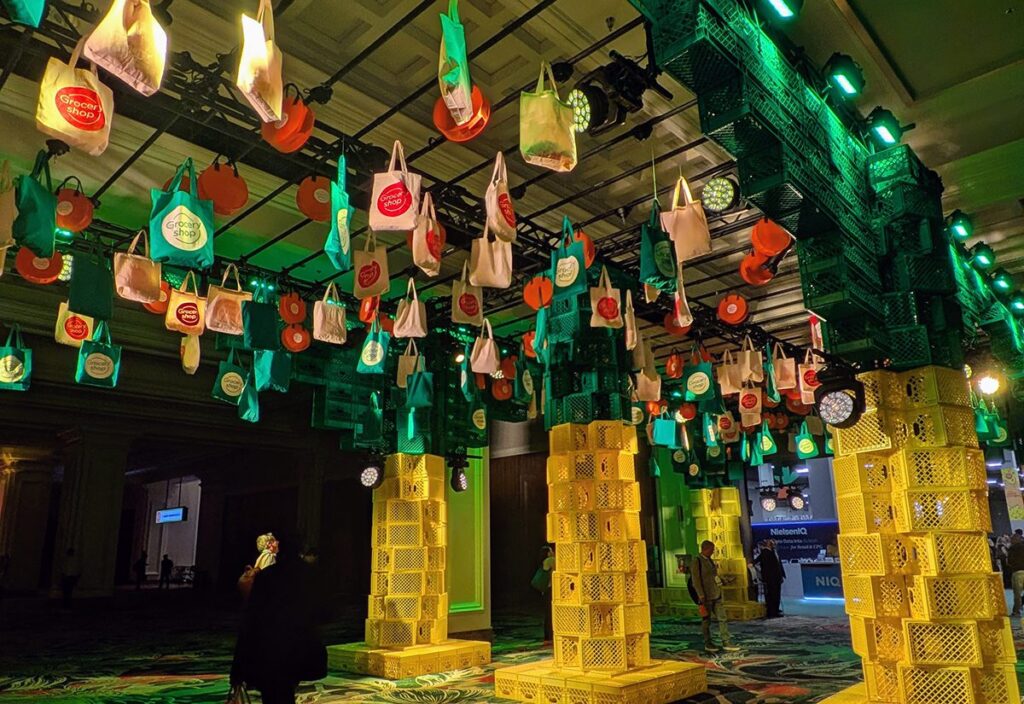Harrah’s Total Rewards rolls out the red carpet when members travel.
What kind of incentive do you offer your best customers when your core product is cash?
That was only part of the dilemma facing Harrah’s Entertainment. With 21 properties and annual revenues of $3.5 billion, the company is a leader in the casino industry. But its Las Vegas competitors have sunk big bucks into renovations and upgrades to woo tourists. About 60 percent of Harrah’s Sin City revenues come from players who regularly visit its properties elsewhere. So how could it recognize these regular customers and make them feel welcome in all its casinos?
“There’s very little brand loyalty in the casino business,” says senior vp-marketing Rich Mirman. “We wanted consumers to consolidate their gaming at Harrah’s.”
The solution: an upgrade of the company’s four-year-old Total Gold loyalty program. Total Rewards turns a year old this month, with 19 million members and a nod as No. 1 on Information Week’s Innovation 100 ranking of leaders using information technology to better serve customers.
The program helped boost same-site sales 12 percent in 2000. That’s an impressive figure, considering that same-site sales growth was flat in 1997, the year Harrah’s consolidated its various property-specific loyalty programs into the national Total Gold system. Sales increased 8.5 percent in ’98 and 10.4 percent in ’99.
This spring, Harrah’s is using Total Rewards to test a NASCAR affinity card and leverage its alliance with Coca-Cola, a fellow NASCAR sponsor. Cardholders were also offered a shot at golfing with Tiger Woods’ coach, Butch Harmon, at Harrah’s Rio resort in Vegas.
Total Rewards centers on magnetic-stripe cards consumers use when playing slots or card games. The cards track how long a member plays, how much he bets, his games of choice, and his winning record.
Cards tally “reward credits,” which vary by property but average one credit per every $10 played. Cardholders redeem credits for discounts or comps on meals, shows, and hotel rooms. They also earn credits through partners such as AT&T, Hertz, and Visa. Cardholders get promotional offers via direct mail, from their local casino, and from destination properties.
Harrah’s broke from standard gaming industry practice, which lets players cash out their frequent-player incentives at the end of each day. “They’d cash out and leave. That doesn’t incent loyalty,” Mirman says. Instead, the company mails certificates and special offers good for the player’s next visit. Turnaround ranges from one week to a month, depending on the property.
Cardholders were surveyed before the same-day fulfillment was dumped. Half didn’t mind waiting, and a quarter preferred mail delivery. For the remaining 25 percent, Harrah’s analyzed how much additional money would make them willing to wait, and adjusted its scale.
Distant Relations
Cardholders earn three kinds of incentives: comps on rooms and food; direct-mail offers, which are tailored to each cardholder based on his total casino play and the percent he plays at Harrah’s; and tiered benefits. When cardholders spend enough to qualify for the next level, Harrah’s automatically mails them a new card. About 88 percent of Total Rewards members carry the initial Total Gold card (which carries no annual minimum on reward credits earned), nine percent hold platinum (3,000-credit minimum), and three percent have earned diamond cards (10,000-credit minimum).
“This has changed our business dramatically,” says Mirman. “The whole idea is to establish relationships in local markets, and then drive traffic to destination properties. In Las Vegas, how does Harrah’s compete with neighboring properties like Bellagio, which spent $1.7 billion [building the property] to attract customers? We spend our money to invite customers. We take advantage of having a relationship with known guests.”
Total Rewards leverages a few other key relationships, too. Harrah’s signed on as NASCAR sponsor this year, including title sponsorship of the Texas 500. At that race last month, the company began testing a NASCAR/ True Rewards program by passing out 100,000 affinity cards fans can redeem at Harrah’s properties for hotel discounts. “NASCAR fans index very high with gaming,” Mirman says. “With 225,000 fans at a race, if we can connect with them, we’ll do well.”
Harrah’s also has stepped up joint efforts with Coca-Cola, whose own NASCAR drivers attend meet-and-greets with True Rewards cardholders at properties. “We’ve really come together with them as partners within the last year,” Mirman says. The company is mulling promotional tie-ins with golf pro Harmon, who runs the golf school at the Rio hotel. Cardholders may get a chance to hit the links for invitational tourneys with celebrities.
Harrah’s consolidated all marketing and advertising earlier this year at TLP, Inc., Dallas, and last month broke its first TV and print ads combining a national brand image with property-specific promotional messages.
The company employed a strong promotion plan throughout Total Rewards’ first year, awarding $4 million worth of prizes. The program launched in April 2000 with monthly sweeps drawings in each property for prizes ranging from cash and cars to a house. Reward credits doubled as sweepstakes entries (one entry per 50 credits earned) for the monthly drawings and for a huge national drawing in December.
That climactic event, dubbed Total Rewards Giveaway, was simulcast at all properties, each of which held its own drawing for five finalists. Each property was introduced on screen before officials in Las Vegas picked winners for the grand prize ($250,000), first prize ($50,000), and three second places ($10,000 each). The sweeps campaign “worked amazingly well,” with record revenues for some properties at the slowest time of year, Mirman says. Harrah’s will repeat the effort this year, probably with tie-in partners.
Sounds like the stakes are rising.



